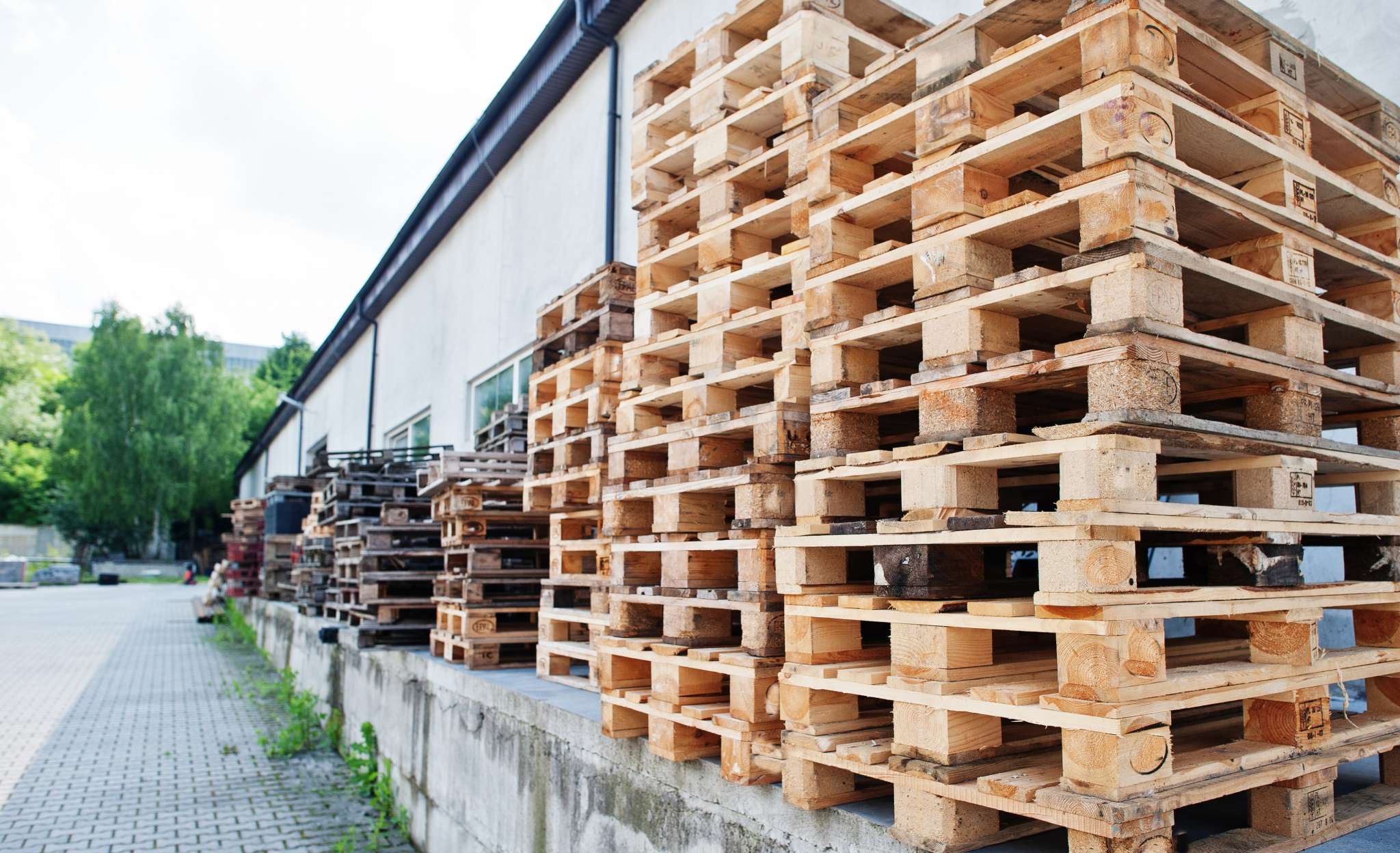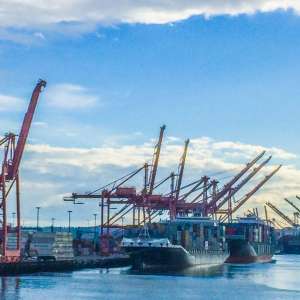Why use pallets for container shipments?
Latest update on 23 April, 2024 by Aurora Park– Marketing Analyst at FreightAmigo
Shipping pallets serve as essential platforms for the simple and efficient handling, storage, and transportation of items in pallet shipping containers. Their introduction, coinciding with the invention of forklifts in the early 20th century, revolutionized the way goods are moved, making pallets a cornerstone in the use of containers and shipping containers. There are two billion pallets in use around the world. They are an important part of the logistics and transportation sector.
These platforms are especially useful in container shipments. They come in different materials, including wood, plastic, and metal. Wood is the most common. But plastic pallets are becoming more popular because they are strong, durable, and resistant to contaminants. This is why they are becoming more common in the industry. FreightAmigo will walk your through the relevance of choosing the right pallet type for optimizing container shipments, ensuring the safety and efficiency of the cargo transport process.
Want To Compare The Best Express, Air Freight, Sea Freight, Rail Freight & Trucking Rates So As To Have Better Control On Cost?
Benefits of Using Pallets in Container Shipments
Pallet shipping containers offer numerous advantages that streamline the logistics process, making them an indispensable tool in modern shipping and handling. One of the primary benefits is the ease of transport and portability. They enable quicker movement and loading of goods, significantly speeding up the turnaround of vehicles. This efficiency is enhanced by the pallets’ compatibility with forklifts and other loading vehicles, which can easily maneuver due to the containers’ rectangular shape and smooth surfaces.
Enhanced Protection and Durability
Pallets are designed to offer robust protection and durability. They provide a strong base that supports the transportation of heavier commodities without the fear of damage. This strength is crucial in protecting goods from environmental factors such as dirt, debris, and water damage. For items like fresh produce, the design of pallets facilitates drainage and circulation, which is essential in preventing spoilage and maintaining the quality of the goods during transit.
Cost-Effectiveness and Environmental Impact
Utilizing pallets in shipping is not only efficient but also cost-effective. They allow for the consolidation of multiple items into a single shipment, which reduces shipping costs and minimizes the environmental impact. They are predominantly made from materials like wood, which are recyclable and offer a sustainable option in the logistics industry. This sustainability is further supported by the pallets’ reusability, as they can be recycled and repurposed, thus contributing to a reduction in the overall carbon footprint of shipping operations.
Types of Pallets
Pallets, the most commonly used type of packaging in freight shipping, are indispensable for transporting freight and securing cargo on trucks. They come in various materials and designs, each suited to different shipping needs and environments.
Stringer and Block
- Stringer Pallets: These are among the most traditional pallet types, characterized by a frame of three or more parallel pieces of timber (stringers). They are lightweight yet strong, offering support by allowing forklifts to lift them from two sides. Typically made of wood, stringer pallets can also include reinforcements made from other materials for additional strength.
- Block Pallets: Unlike stringer pallets, block pallets can be accessed and lifted from all four sides due to their more robust design featuring blocks between the pallet decks and stringers. This type is often made from wood or plastic and is ideal for heavier loads and various logistical operations. They provide a higher handling efficiency and are durable, making them suitable for multiple uses.
Specialty Pallets for Diverse Needs
- Export and Nestable Plastic Pallets: Designed for single-use applications, these are lightweight and cost-effective, making them ideal for international shipping. Nestable pallets save space and reduce shipping costs because they can be stacked into one another when not in use.
- Metal Pallets: Metal pallets are made from materials like aluminium, carbon steel, or stainless steel. They are chosen for their high load-bearing capacity and durability. They are perfect for harsh environments and extreme weight requirements. They are commonly used in the automotive and aerospace industries.
- Customized Options: For specific needs, they can be customized with features like steel frames for added strength or made from High-Density Polyethylene (HDPE) for enhanced durability and washability. These adaptations ensure that they meet the precise requirements of different industries, including food, chemical, and pharmaceutical sectors.
Knowing the different types and how they can help you is important for choosing the right pallet for your shipping needs. This helps you stay safe, efficient, and cost-effective.
Best Practices for Palletizing Cargo
Optimizing the stacking and securing of cargo on pallets is crucial for efficient and safe transportation. Here are some key practices:
-
Efficient Stacking Techniques
- Maximize Space Usage: Utilize algorithms like the Find a Missing Dimension algorithm to arrange parcels with varying dimensions efficiently on a pallet.
- Stacking Order: Place the heaviest boxes at the bottom and lighter ones on top to maintain stability. Ensure boxes are stacked in columns, aligning one directly over the other.
- Avoid Gaps: Bridge any wide gaps between the boards on wooden pallets with additional boxes, though this might reduce the compression resistance slightly.
-
Securing the Cargo
- Use of Slip Sheets and Stretch Wrap: Place slip sheets under the cargo to protect the bottom layer and use stretch wrap to secure the load, especially for individual pieces over 150 pounds.
- Strapping: Strap the boxes to the pallet using durable materials like nylon straps for added security. This prevents shifting during transit.
- Consistent Wrapping: Properly shrink wrap it, ideally wrapping it 3 to 5 times to ensure the cargo is tightly secured.
- Clear Labeling: Label all shipment pallets clearly with an address and phone number. Include visual reminders of proper pallet patterns for the staff handling the shipments.
- Documentation: Properly document the shipment details, including product dimensions, weight, and handling needs. Ensure all boxes are packed without air spaces and are sealed securely.
Implementing these practices not only enhances the safety and integrity of the cargo but also streamlines the shipping process, ensuring compliance with carrier regulations and reducing the risk of freight damage.
Conclusion
As we consider the future of logistics and the ongoing evolution of shipping methods, the role of pallets remains central to the efficient and sustainable transportation of goods. For businesses looking to navigate the complexities of container shipments, FreightAmigo offers a wealth of resources and expertise to leverage pallets effectively, ensuring that every shipment is optimized for success. As we move forward, the significance of choosing the right type and employing best practices in palletization cannot be overstated, underlining the continued importance of pallets in the global supply chain.
If You Are Looking to Optimize Container Shipments with Efficient Pallet Utilization, Please Visit the FreightAmigo Enquiry Page to find out more.
Read More:
How to Reduce Air freight Cost for Shippers | FreightAmigo
How to Safely Pack and Ship Furniture | FreightAmigo
Efficiency at its Best | AGVs | Streamlining Operations | FreightAmigo
If you have any inquiries on logistics/supply chain, feel free to contact FreightAmigo now:
Chat with us online | Hotline: +852 28121686 | WhatsApp: +852 27467829









































